Biden Wins!
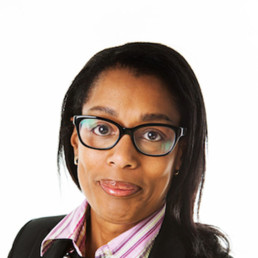
Written by Dianne Greyson
Director of Equilibrium Mediation Consulting and Managing Partner - Synergised Solutions Ltd
When I saw the announcement on Saturday 7th November 2020, I was so happy. I jumped up and down, I was so elated. People may think this is an odd response from someone who lives in the UK. Not at all, there are many people in the UK who felt the same way I did. Emotions were on full display. My twitter feed was immersed with joy and happiness. As I continued with my happy thoughts, I began to wonder why I felt the way I did and why others felt like me. It really wasn’t difficult for me to work out.
Trump represents all that is wrong in the world. He wanted to divide his nation and the world by creating an atmosphere of hate towards those who did not look like him or think like him. His desire to rule in this way showed his need to dominate. He empowered like minded people to rise up and deliver a wrath of hatred which I imagine he hoped would create some sort of master race.
He is the epitome of all that I fight against. As a black women, I use my voice to fight against those who wish to create division and dominate others because they think they have a right. The Joy that I felt about Biden’s win, is the joy that I want to continue to feel when I am advocating for the rights of people to feel valued and respected, no matter what ‘group’ they belong to. My continuous campaigning on the Ethnicity Pay Gap is just one ways for me to visibly demonstrate through action the injustice that has befallen black, Asian and ethnic minorities because others feel they have the right to treat us differently.
Like many of us who are advocating for the rights of others, Biden has a tough road ahead, I hope with the combined strength of Vice President Kamala Harris they can get into some ‘good trouble’ to make the change that USA needs. I hope that we can all learn from this moment and feel reinforced that, when we advocate for the rights of people who have been deliberately treated badly because of structural discrimination, that we are on the side of history.
I would like to leave you with a quote from the amazing Maya Angelou:
“Develop enough courage so that you can stand up for yourself and then stand up for somebody else.”
The need for a trauma-informed, bias-aware and compassionate curriculum
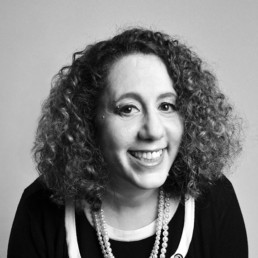
Written by Laila El-Metoui
Equality Advocate | Stonewall Lesbian Role Model 2020 | Pride 365 Champion | Helping leaders foster inclusive & diverse workplaces through training and consultancy | Founder of Pride in Education and Educating OUT Racism
A massive thank you to DiverseEd for organising such a comprehensive event.
My reflections are about us having a trauma-informed, bias-aware and compassionate curriculum, so what does that mean?
One of the previous panelists (Amanda) mentioned refugees and trauma in the previous panel and my curriculum background is in ESOL , EFL teaching English to migrants, refugees and people seeking refuge which is better than referring to them as ‘asylum seekers’. I will be talking about it from a Further Education perspective in the UK and looking at the language we use.
Trauma-informed:
We can look at it from many angles but I’d like to suggest a couple
Firstly personal trauma , you cannot look at someone and guess what their background and experiences have been. Secondly historical trauma – which includes decolonising the curriculum and not looking at subjects in silos for example when teaching French one could look at where it is spoken in 29 countries, why ? because France colonised those countries, the language we use is important, these countries were not ‘conquered’ as stated in britanica.com but invaded. From an ESOL perspective it means being mindful of potential triggers and having systems in place to support them but also the trauma that people may have experienced as a result or leaving their homes or the current pandemic.
Bias-aware:
Breaking down stereotypes and being aware of our own prejudices is a good way to start.
Looking at LGBT+ lives for example, some of the myths commonly heard within the sector include – you cannot embed LGBT+ within classes where people have low level of English, looking at the the language we use and teach for example asking about pronouns for referring to partner and sibling rather than husband and wife, sister brother will lead to a more inclusive curriculum. Other panellists (Lisa) mentioned stories in the previous panel and Chris talked about the lack of visibility in course books, for those very reasons I have designed my own resources, one can embed any themes within a story. I have written narratives which included themes such as domestic violence, social isolation, my journey to the UK. By creating relatable and meaningful content we will develop more than reading, writing, speaking and listening skills, skills like empathy, critical thinking and compassion.
Compassionate:
Compassion is about kindness and fostering an environment where people are free to make mistakes, to experiment and express their authentic selves. Challenging discrimination compassionately, eliciting the difference between understanding, agree and accept; eliciting the difference between an insult and an opinion. This needs to be contextualised within a whole organisational approach and include:
- the use and collection of data so that the content reflects local population
- understanding achievement, success and progression
- a zero tolerance policy with regards to discrimination
- easy access to resources knowledge sharing and training
- making different groups visible and represented (365 days a week) not just for black history month, LGBT HM or disability week
Organisations also need to have:
- supportive forums to raise issues
- a clear and visible commitment from senior leadership
But we also need funding, the ESOL funding has been slashed by the UK government more than halved in fact in the last 5 years. Other factors include the imminent exit from the EU, the immigration Law and many other socio-economic factors which contribute towards a hostile environment for people of colour.
Digital exclusion has been highlighted by this pandemic with the most vulnerable groups not being able to access ESOL provision due to not having a mobile phone or access to the internet. Giving people the tools to access learning is part of having a compassionate curriculum.
To end on a positive I want to highlight how kind people have been and I’d like to invite any ESOL practitioner watching to join the newly created Facebook group called Digital pedagogy for ESOL teachers, where practitioners can get practical tools and resources to share knowledge and support each other: https://www.facebook.com/groups/741096156803038/?ref=share
Laila El-Metoui she/ her / hers
https://www.linkedin.com/in/lailaelmetoui/
Equality Advocate | Stonewall Lesbian Role Model 2020 | Pride 365 Champion | Helping leaders foster inclusive & diverse workplaces through training and consultancy | Founder of Pride in Education and Educating OUT Racism
Diversity in the curriculum: teaching and learning with human stories

Written by Lyfta
Lyfta boosts classroom engagement by connecting with students on an emotional level and sparking interesting discussions. Students are able to connect with real human stories introducing them to diverse cultures and perspectives which builds knowledge and cultural capital.
A few weeks ago I had the pleasure of being part of a panel of esteemed colleagues at the Big Virtual Conversation as part of the series of events organised by #DiverseEd . The session, hosted by the dynamic duo, Hannah Wilson and Bennie Kara, was a chance for us to hear from a range of speakers from the education sector. I had the opportunity to speak about the power of human stories to help to bring diversity into the curriculum, and the key themes are outlined in this blog post.
Asking someone where they’re from can come from curiosity but can also serve to make people feel alienated, by placing undue emphasis on their right to belonging. If you ask someone instead, “tell me about yourself, what’s your story?” it invites them to craft their response and weave their answer so it belongs anywhere and on their own terms.
When you tell your own story you can start to make sense of the connections and links that bring the elements together. I’ve been thinking about the many threads and moments in my own life that seem to have led me to where I am now.
Human stories have always fascinated me. They led me to study social anthropology at university and gave me a reason to explore beyond the pages of books, leading me to buy a year’s open ticket and accidentally spend some ten years abroad, learning, working, teaching and continuing to weave into my story, stories and histories with new threads of different hues, that had echoes of my ancestors. I learned new concepts and perspectives every time someone told me a new story.
During this time I ended up learning Hebrew, which taught me words that just don’t exist in English, opening me up to new cultural concepts and helping me see the world in new and different ways. One of my favourite words with no English equivalent is the word ‘Firgun’ (פירגון)said ‘fear-goon’. This one word describes genuine, unselfish delight or pride in the accomplishment of the other person – or a generosity of spirit, an unselfish, empathetic joy that something good has happened, or might happen, to another person. It is similar to the South African concept of Ubuntu, I am because you are. Your success is our collective joy. And in the same way, your story, is our collective story.
I believe that human stories are more important than ever. The world events of the past 6 months during the global pandemic have brought this home to us in unique and often tragic ways. Like many in the education sector, I’ve been lucky to see the importance of my work’s potential to harness the power of humanity for the common good, even at this challenging time. At Lyfta, we capture human stories in the form of powerful short films and then turn these into 360 degree explorable, immersive and interactive spaces in which teachers and their students can learn about people, places, values and skills.
While we are restricted from close human interaction and travel, these human stories seem more precious than ever. In the words of one student, Thomas, with Lyfta’s immersive platform you are “able to instantly teleport yourself halfway across the world while staying on the same spot and see how things are for real”.
One important aspect of schools’ offering for young people in their care is the element of broadening their horizons, and instilling a sense of cultural capital through the music, texts, art and experiences that are included in the curriculum, such as school trips. We know that even in normal times, many children will not have the opportunity to go far beyond their own postcode.
Teaching and learning through human stories using Lyfta can be a powerful way to ensure that students have experience of the world as part of their entitlement to cultural capital. This can be important also as a way to teach an understanding of the protected characteristics, and show how diversity and equality are promoted within our schools.
We have seen that teaching and learning through immersive human stories can bring breadth, depth and meaning to concepts, taking them from the realm of information to the realm of deeper knowledge. Exploring Lyfta’s storyworlds enables teachers to unlock critical thinking skills in their students and helps them understand complex concepts, they were not aware of previously. Engaging in learning through these powerful stories can provide important breadth. Leading authority on learning, Chris Quigley, describes this breadth as both cultural capital ie. the background knowledge of the world students need for inference and understanding, and also the range of situations students need to grow confidence in the threshold concepts. These threshold concepts are understood as concepts that ‘open up a new and previously inaccessible way of thinking about something’.
Our vision at Lyfta is to ensure that by the time a child completes their education, they will have visited every country in the world, and will have met at least one person in every place they go. Right now, you can take your students all the way to an Ethiopian village to visit Mesgana and Gebeyeu in their family home, or hop over to Malte’s garden in Berlin to see how honey is made, or pop down to Cornwall to litter-pick with Rob on the beach, and so much more.
We have a limited number of places available on our funded CPD training webinars as part of the Connecting Classrooms through Global Learning programme. Participants who successfully complete the course will receive free access to the full range of Lyfta content and resources for a whole term.
Try Lyfta for free here: https://www.lyfta.com/
Remembrance Day
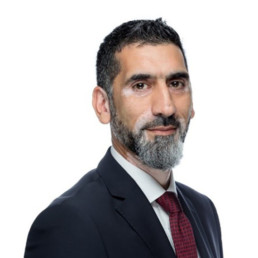
Written by Sajid Gulzar
Founding CEO of the Prince Albert Community Trust (PACT) and National Leader of Education
On October 31st 1914 a 26 year old gunner and his machine gun crew managed to hold their position against a German onslaught. The Germans were using more effective weaponry and outnumbered the gunner and his crew five to one. A second crew fighting alongside the gunner were killed as a result of a direct shell hit. The consequences of the machine gun crews being over-run were potentially devastating. The goal of the German offensive was to capture the vital ports of Boulogne and Nieuport.
The gunner and his crew held the Germans off, they continued to fire at the enemy all day. When all around him had been killed, despite being shot, the gunner continued to fight. Eventually, he was left for dead. The stand made on that autumn day on water-logged ground during the First Battle of Ypre, allowed reinforcements to arrive and the German advance was curtailed. The gunner would later be awarded the Victoria Cross. His citation noted ‘remained working his gun until all the over five men of the gun detachment had been killed.’
The gunner was born in the Punjab province of what is now Pakistan and his name was Khudadad Khan. This young man, a member of the Duke of Connaught’s Own Baluchis helped to ensure that two ports used to supply British troops with vital supplies, remained in Allied hands. He was the first Muslim soldier to be awarded the Victoria Cross and there is a commemorative stone in his honour at the National Memorial Arboretum.
During the course of the Great War, hundreds of thousands of young men left their homes behind to travel to Europe and fight for Great Britain. Many would never return. My mother recalls her father telling her that some villages were almost cleared of their young men. The level of sacrifice is indescribable. Khudadad Khan’s story is one amongst countless others of courage and lives cut short on the battlefields of Europe.
Many of you reading this may be reading about Khudadad Khan for the first time. I first heard about him about 10 years ago. I didn’t know about the Indian contribution to the war effort until well into my twenties. That is despite being taught history at school. Despite teaching history at school. It wasn’t until 3 or 4 years into my teaching career that I discovered that 1.3 million Indians including 400,000 Muslims fought during WW1. That many thousands of them died on foreign shores, having never been to the nation they were sacrificing their life for. I didn’t know that 12,000 wounded Indian soldiers were sent to Brighton, that many of them died and were buried there in the cemetery at Horsell Common.
Soon after I started teaching, the events of 9/11 changed our world. I remember watching the news in horror in 2005 as the details of the 7/7 attacks in London were emerging. I was actually on a visit to the school where I would be taking up a new role in the approaching September. Following the London attacks in particular, there has been a lot of soul searching about identity and belonging. What must the level of disenfranchisement be for someone born and brought up in a country to attack it from within. This is of course the extreme end of the spectrum that goes all the way from not quite feeling you belong to all out war.
I know this may appear a gross over-simplification but identity and belonging are definitely a part of the mix. So, where does Khudadad Khan and his regiment fit in? I spent much of my youth feeling like I don’t belong, particularly when it came to The World Wars. More than once I can remember being told that I didn’t deserve to be here, that the good people of Britain had sacrificed their lives for the freedoms that my family and I were enjoying. That somehow my being here was a betrayal of that sacrifice. I remember that my defence, at least as an adult, was based on the need of the country to rebuild post war and the importance of the migration of my father’s generation to Britain. At the time though, I didn’t know that my grandparents peers had fought and died too, in their hundreds of thousands.
I remember visiting a great aunt on a trip to Pakistan when I was 20 (I didn’t feel I belonged there either but that’s a whole other blog!). Her son had gone to fight for Britain in Burma during WW2. He never returned. 50 years after he left for war, she still waited for him to return. Would my knowing these stories have made a difference growing up? Had I known about the sacrifice of my forefathers to secure our freedoms, had I known about the extraordinary bravery of Khudadad Khan and countless thousands like him? Had I been taught that I had a vested interest, a shared history of blood shed for the cause? Quite possibly yes to all of the above.
What is quite striking is the missed opportunity at this time of year to use this shared history, this shared sacrifice to bring communities together, cement feelings of belonging and to help secure identity. It is not just schools that miss this opportunity, from film to the media, opportunities are missed or just ignored. The recent Dunkirk is an excellent case in point. The film completely ignores the Indian soldiers who were present and took part in the events depicted in the film. I’ve seen many a film and a documentary, chronicling the World Wars. What I haven’t seen very often is a true depiction of the scale of the commonwealth contribution to the cause. When in the epic and beautifully shot 1917, there was an attempt to include commonwealth representation, one right wing commentator described the presence of non-white soldiers in the film as ‘incongruous’. I would suggest that the reason for this is that their stories have never been told. As far anyone learning about the World Wars in school or watching films about them is concerned, they were fought by white men, predominantly in Europe.
The commonwealth contribution needs to be compulsory learning. Our children need to know that the poppy clad fields of European battlefields are soaked in the blood of the non-white commonwealth soldier as well as the English Tommy. Part of this shared history is that our children often live in neighbourhoods, streets and even houses that sent very young men off to war. In some cases these children also have forebears who left their towns and villages more than 3000 miles away to fight in the same war for the same cause.
If you read this whilst thinking about your school’s plan for marking VE Day and Remembrance Sunday, then please share the stories of the young men and women who came from afar as well as those closer to home. Let the poppies you sell symbolise shared sacrifice and shared history in this age of divisiveness.
Values-based Education
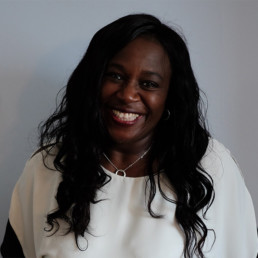
Written by Audrey Pantelis
Audrey Pantelis is an associate coach, consultant and trainer. She is a former Headteacher of a Special Educational Needs and Disabilities school and a current Diversity, Equity and Inclusion consultant and leadership coach.
World Values Day, 16th October 2020 – A Reflection
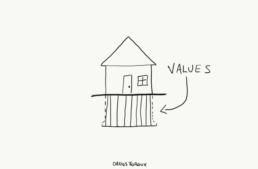
I love the diagram by Darius Foroux, who is an entrepreneur, author and podcaster. It succinctly highlights the understanding that I have of values. Some people are able to articulate their values from the get-go. I cannot say that this was the case for me – but when I was starting a brand-new school – a blank canvas – the values that I carried with me became part of the school’s mission and ethos.
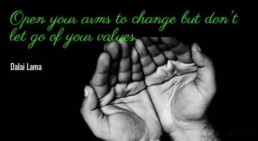
It is safe to say that change is inevitable – and living through the current global pandemic we can testify that this is the case! We have never been as tested, stretched or challenged we are right now. The education sector is undergoing some fundamental changes and its interesting to see how educators adapt. Some are attempting to apply yesterday’s rules in today’s world; some are lost and appear to be floundering – and some are standing on the rock of their values and are adapting without losing their understanding of their why. Values are, like the diagram by Darius Foroux, the foundation of our character and they define our actions.
The seven values that I discussed as part of the Diverse Educators workshop on October 16th as part of World Values Day were (in no particular order): compassion, respect, fun, diversity, loved, collaboration and authenticity. These values were evident in the free special school that I founded and led for five years. They were incorporated into the aspirations of the school and were evident and lived for both pupils and staff. These included:
- Our ‘Golden Rules’ were child-centred and easy to follow;
- the curriculum had lots of opportunities for children and young people to learn how to work together;
- I composed the school song that was sung every week by staff and pupils;
- Every child and young person was a member of the school council. We ensured that everyone’s voice was heard and the older pupils helped to run the school council sessions each week. A weekly question was set by the senior leader. The link to setting up an inclusive school council is here:
https://home.smartschoolcouncils.org.uk
- ‘Star of The Week’ certificates were awarded each week in assembly, but they were not always awarded for academic success. We loved celebrating the little wins as well as the big!
Staff are any school’s biggest resource and I was able to ensure that my values permeated their day-to-day roles. These included the following:
- The ‘ABCD’ Awards each week – ‘Above and Beyond the Call of Duty’ – staff were nominated by their peers to be awarded recognition of when they had acted ‘Above and Beyond The Call of Duty’ in their day-to-day roles. It had power in that the staff nominated each other and it enabled staff that didn’t have a loud voice to be heard by them doing what they did habitually
- Staff would work in mixed groups on whole school projects – enabling collaboration and respect for differing viewpoints
- Success was celebrated – in written and verbal formats every week – and staff felt valued and respected for what they brought to the school community – from organising wellbeing breakfasts to supporting parents when they escorted pupils from school to parents collecting their children and young people at the end of the day
- ‘FAF’ weeks – staff left at four each day for a designated week to enable rest and recuperation
- We had goodies in the staff room – sweets, fruit, fizzy drinks, biscuits – not always but sometimes – just to make a week/day/term go a little easier!
- Support staff had a voice and met with me as a group once every half term to air concerns
These small but highly important gestures enabled me to know that I was doing all that I could to ensure that the precious cargo that we were nurturing and supporting (the pupils) were valued and equally their wellbeing played a role in the growth of the children and young people that we served.
My summary of the thoughts that I have discussed are listed below:
Takeaways:
- Value individuality and promote it
- Give opportunities for pupils to work collaboratively – our curriculum had lots of opportunities for children and young people to learn how to work together
- Our ‘Golden Rules’ were child centred and easy to follow
- Encourage laughter
- ‘Be flexible’ with the rules from time to time
- Create a sense of belonging – a shared experience that bonds the community
It sounds so simple – yet it is one of the first things that is overlooked when there are the daily pressures of life to contend with… and when social distancing and lockdowns weren’t a “thing”, we were driving towards being establishments that proved that “we were the best at…. None of that matters so much at the moment. It is how we connect; how we are and being enough that matters. Values are our compass – and in these turbulent waters, we need to ensure we do not hit the rocks by ignoring our values.
“If we are heard, then we can speak. If we are loved, then we can love others. If we are nurtured, then we can grow.”
Audrey Pantelis
Tuesday 25th May 2021
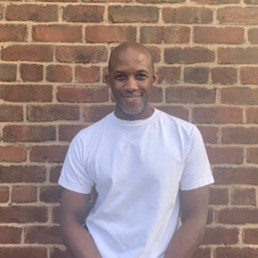
Written by Darren Crosdale
English and Media Studies-trained teacher, currently working in a large Liverpool comprehensive
This date will mark a year to the day of George Floyd’s murder. I use the word ‘murder’ deliberately because, despite the arguments that lawyers will no doubt make to the contrary, the world possesses clear, video evidence that it was murder, plain and simple.
I still have not seen the clip. I never will. To watch such imagery is, to my mind, self-flagellation. I do not engage in that torture and warn my family – especially my social media-addicted daughter – to think very carefully about the emotional toll such images can have on our psyche.
As the above date approaches, you can rest assured there will be blogs and vlogs and articles and news items asking how the world has “changed”. How that 8 minute and 46 second horror short and the resulting worldwide protests “changed” many aspects of society, including education. Like most teachers, I firmly believe in the power of education and I will definitely be curious about how the education world has “changed” following George Floyd’s murder. Up and down the UK, family, friends, colleagues and associates have responded to the Black Lives Matter movement with renewed vigour: change the curriculum; review the policies; train the teachers.
But as Frederick Douglass, the former slave turned writer and public speaker said: “Power does not concede without a demand.” I am not, at all, the only person who feels that the demands of racism are being placed on the shoulders of the victims. Such bitter irony. The stereotypes that we as thinking and evolving societies ought to have defeated centuries ago, remain: lower intelligence, higher physicality, unworthy histories. The list is, of course, longer and more subtle than this.
As an eternal optimist, I focus on the notion of things getting better in schools. I have to believe this. However, as an eternal optimist with a good memory, I recall that we have been here before. We have collectively focussed on “changing” our racist societies and racist institutions and racist individuals’ attitudes before. The whole country has been engaged in the discussion of diversity and inclusion and breaking barriers and moving forward more times than I care to count in my own lifetime.
The UK broached the topic of change after Stephen Lawrence’s murder in 1993 and the McPherson Report, four years later, made the term “institutional racism”, more mainstream. I worked in the Merseyside school that Anthony Walker, murdered in a racist attack in 2005, used to attend. People often forget that his White killers attended the school, alongside this wonderful young man. The Department for Children, Schools and Families examined the issue of Black educational attainment in 2007. Alexander Paul, an 18 year-old student from south London, gave a powerful presentation about being stopped and searched at the 2014 Conservative Party Conference. David Lammy, MP, in 2017 reviewed how ethnic minorities fared when they came into contact with the criminal justice system. I am not even going to discuss the coronavirus. The UK, a country that likes to boast about its multi-cultural status, ended up with one of the highest per capita death rates in 2020, and ethnic minorities were over-represented in these numbers as were the poor and public-facing workers.
Schools are especially busy as I write, early October, 2020. Most schools are engaged in some form of analysis: reviewing data, auditing curricula, employing speakers to deliver staff training. Will all these efforts to change the UK’s complicated attitude towards Black people in the education system yield results, however? There are still those on Twitter who struggle to link police brutality in the US with education in the UK (and, of course, fail to recognise this, in itself, is highly ironic.). So what if GCSE students, in 2020, do not study texts written by Black writers? So what if students do not learn the dual nature of Churchill? Wartime hero but also responsible for allowing three million Bengalis to starve. So what if students have no idea of the fuss surrounding Edward Colston’s statue being tossed into Bristol harbour.
What will schools be like by May 25th 2021? Will the government recognise that for all the past reviews and examinations of race, deep divisions and inequalities remain? Will the councils creating Task Forces to examine racial issues in their towns and cities create lasting change? Will enough school-based staff have had the necessary and uncomfortable conversations around race? Robin DiAngelo, in her best seller ‘White Fragility’ explains that middle-aged, middle-class white women are most likely to cry if their racial view of the world is challenged in any way. Will enough of these tears be transmuted into new ways of thinking and challenging the status quo?
The answers to these questions remain to be seen. We know our government has been remarkably quiet about the Black Lives Matter movement. The protests threw a much-needed light on our society and its continuing struggles with race – mostly because the education system has never properly learned to discuss our troubled history in an honest and guilt-free manner.
I watched BBC presenter Daniel Henry’s inspirational documentary ‘Fighting the Power: Britain after George Floyd’ (directed by Eddie Hutton-Mills) and wondered about the young Black women who, with their passion and social media savvy, organised huge marches in lockdown London during the summer of 2020. Will they be disappointed in a year’s time? Will they have noticed any changes? Will prime minister Johnson’s racial disparity review (led by a controversial Munira Mirza who is not quite sure if institutional racisms exists) have reported back by then? Who knows?
What I do know is that for the children in school at the moment – all children, not just the Black ones – carrying on as if huge protests about race never happened, as if things do not need a good shaking and sorting, as if their teachers do not need to learn about all types of inequality, is not an acceptable option.
Darren Crosdale
www.blackteachersanecdotes.co.uk
Cultural Competency
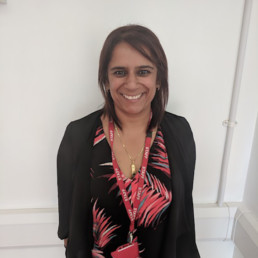
Written by Amardeep Panesar
Headteacher with two decades of experience in education
As an ethnic minority leader, many challenges and barriers do come our way. It is how you perceive them and more importantly yourself in order to be successful. I personally, do not see these as hindering barriers, but challenges that I know I/ we can overcome, depending on “how badly I want something”. A philosophy that most definitely comes from my foundation and sports participation – let your work do the talking!
I’m writing my first blog on Cultural Competency based on a fantastic opportunity given to me by Diverse Educators in particular Hannah Wilson, following the response on social media, I’ve realised just how powerful this platform really is in developing educators! So let’s do it…
Why is it important to be culturally aware of the needs of our children?
Let us first look at the statistics:
- African / African Caribbean people face more ingrained pathways into the criminal justice system as a result of greater levels of disengagement and exclusion from school (Wright, Francis and McAteer, 2015).
- Over the last five years, the number of young ethnic minority people in the UK who are long term unemployed has almost doubled, whereas for young white people it fell slightly.
- In 2014, the probability of Black African women being detained under mental health legislation in England was more than 7 times higher than for White British women.
- People from ethnic minorities are twice as likely to live in poverty compared to White people across Britain.
With these statistics against us and the young people we work with, it is crucial to be culturally competent when educating our young children. Both for adults who are from and ethnic minorities and those that are not, in order to give our children the best possible life chances in order to become successful citizens.
In order to fully support and understand, it is critical to understand self and others perceptions, which can be categorised under four main areas:
- Attitudes and beliefs towards others.
- Attitudes and beliefs towards others of the same group.
- Attitudes and beliefs towards members of different minorities and
- Attitudes and beliefs towards members of the dominant group.
As we read on, do take a moment to self reflect and and understand your own perceptions towards others, because we all have them. We are naturally hard wired to like people like ourselves, people who look like us, think like us, share similar values and visions. We need to continue to educate our staff and children on how/ why these perceptions exist and how collectively, over time, things will start to change by listening to each other. Diverse education is crucial, in all areas, especially in culturally diverse schools.
We can all share our experiences through school leadership and educating children. For me, as an ethnic minority leader, everything I have learnt so far has only empowered me to support others in our profession and to help individuals understand culture and children! Every day we learn…
The world assumes the young people of colour will fail or behave a certain way, we as educators, MUST do the opposite.
Diversifying representation while working with textbooks

Written by Chris Richards
MEd in Applied Linguistics and currently works as a Teacher Mentor in Madrid
I have a vivid memory of being told about the importance of images in my classroom. It was 2010, I was doing my PGCE and was eager to start teaching. I remember that this was the first moment of many that shaped the way I have approached diversity and inclusivity in the classroom ever since. As this post explains, the issue of representation in the classroom has come back to me again in recent years.
When I was teaching English language and literature in England and Wales, we made very little use of textbooks. This certainly made things challenging for a newbie, but to focus on the positive, it also gave me a lot of freedom to make my own choices about which images in the classroom. I learned quickly that you have to be careful when you do internet image searches and not for the reasons we tell our young pupils to be careful. Just last week, in preparation for my contribution to DiverseEd: The Virtual Conversation, I searched for some images. With the search term ‘reading’ I found mostly kids, mostly white. The first four were of girls and the first negative image I found was a bored boy holding a book. When I searched for ‘man reading’, men from BAME backgrounds appeared just twice in the first thirty-two images, and the first appeared twelfth.
In 2016, I moved to Spain and began teaching English in a private language academy. It was a huge change in pace, lifestyle and teaching philosophy, and was the new challenge I needed. Aside from very small class sizes (I now work with a maximum of eight), the biggest difference was the use of a course book. In the first institution I worked in here, every group has an assigned course book that we followed across the course of the academic year. Very quickly, I started to notice that representation was very narrow and, while studying for my MEd in Applied Linguistics, I decided to write my dissertation on how gender and sexuality get represented in a sample of course books. It all began with a page about “different” weddings in the UK that had four photos: four straight, white couples. To paraphrase 20,000 words, on the whole, gender was presented rather traditionally, although there were some images of women in positions of power; minority sexuality was conspicuously absent from the pages.
Whether we’re working with course books or not, we should always be ready to substitute and supplement, especially so with images as these can be a very powerful way to give, or withhold, representation. We also need to consider what texts pupils are reading, lest they are always reading the same stories and hearing the same voices. Whose stories do get told and who gets effectively silenced in our classrooms? If we give space to one image or story, we reduce the space for others. Ultimately, this is simply a question of inclusion.
Also crucial is asking ourselves what unwanted or unintended associations inclusion might bring. For example, are people with disabilities routinely referred to in heroic situations, overcoming their disability rather than as people whose identities extend beyond their differences? Are we remembering to show women in positions of power and responsibility outside the home, but forgetting to represent men in caring or homemaking roles? Are LGBTQ+ folk only shown when their minority sexuality is the defining factor?
Asking ourselves these questions initially is effort, but once it becomes habit, once it becomes part of planning and preparation routine, it becomes normal. I can’t look at a course book page now without quickly scanning it for representation. I don’t always choose to substitute and at other times I might specifically leave unrepresentative material as it is, and ask my students what they think might be missing. I turn over that critical evaluation process to them, so they can start to perform this analysis themselves. After all, I won’t always be there to recast the material they encounter in their reading and viewing lives.
My final thought is that we should always be asking ourselves who gets a voice and who gets seen in our classrooms.
Chris Richards, Teacher Mentor
Chris first taught in the UK high school system in inner city Birmingham and South East Wales, but has been working in English Language Teaching (ELT) since 2015. He holds an MEd in Applied Linguistics and currently works as a Teacher Mentor in Madrid. He is particularly interested in inclusivity/diversity, literature, and the use of first language in the ELT classroom.
Menopausal Musings: What to expect as a Senior Leader with the menopause
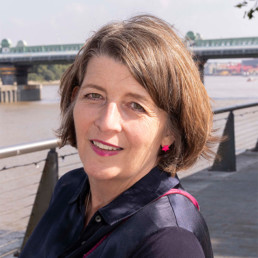
Written by Nicky Bright
Leadership development consultant with over 30 years of experience
A post written in response to the TES article ‘what to expect as a Senior Leader with pregnancy’.
I originally wrote this article last Easter and tore it up as being ‘too close to home’. A taboo subject, and one that has only really been raised more widely over the last 18 months or so, I worried how it would be received, and I would be perceived. But Emma Seith’s TES article on 19th July 2019 emboldened me to have another go. I had only recently sought help for the symptoms I had been experiencing with increasing intensity for about 18 months, without really realising that a) they were symptoms and b) help was available. Instead, I thought I was simply not coping well with increased pressures of work, but not wanting any signs of weakness or vulnerability to show. How wrong I was.
Menopausal women are the fastest growing demographic in the workplace (ONS 2018) and with a retention and recruitment crisis, and our profession being dominated by women, albeit with proportionately more men in senior roles, we should take note, whether we are personally affected by the menopause or increasingly surrounded by those who are. For every ten women experiencing menopausal symptoms, six say it has a negative impact on their work (CIPD 2019). We cannot afford to lose highly skilled and experienced staff who simply need some support, and perhaps don’t realise it themselves.
I now realise that I was not alone in feeling like this, as the menopause was relegated to a cursory mention when I was at school. Our biological education really only emphasised understanding your cycles sufficiently to avoid pregnancy. The portrayal of menopausal women until recently has been derogatory and laughable, providing Les Dawson and others with endless comic material. Women of a certain age are ‘washed-up’, ‘over the hill’, ‘a little neurotic’ and so on. Kirsty Wark’s 2017 BBC programme on Menopause raised the tone of the debate and is one of the pieces of journalism of which she is most proud, understandably in my opinion. Now everyone is starting to talk about it, and even more so with the announcement of a procedure to delay it for 20 years or longer (https://www.bbc.co.uk/news/topics/cxwkx729dx2t/menopause). As Liz Earle said in Stella Magazine (21 April 2019), ‘If you ask any Head of HR ‘What’s your maternity or paternity policy?’, they’ll produce a document. If you say ‘What’s your menopause policy?’ there’s silence.’
As a senior leader, I’m not advocating yet another policy for us to have to update annually, but there does need to be some discussion to ensure that this vital and growing part of our workforce are not unfairly disadvantaged because of ignorance, and simply leave. We all know women who have taken earlier retirement than they may have originally envisaged who have simply ‘had enough’ and are exhausted and don’t even think to ask for help, because they probably don’t realise that, in many cases, they can be helped. Some women sail through without any difficulties, but if increasing numbers of women are working longer, and also reaching leadership positions, we need to help those who aren’t sailing through, so we can all benefit from their years of experience and talent.
Sleep deprivation is known as a tool of torture, and many young parents suffer from it. However, it is less commonly known that fatigue, through disrupted sleep patterns, heightened anxiety and hot flushes, is very common to menopausal women too. With the right support in place we can make the most of their experience and talents in the same way we do for young parents. What about rearranging a member of staff’s timetable for a year or two, so they can come in later if they have been awake half the night, or letting them go slightly earlier if their exhaustion kicks in at the end of the day. Not always possible or indeed necessary, but everyone is different and without a conversation who would know what might help? Giving staff more individual control over ventilation in classrooms can be difficult in very old buildings or new ‘climate controlled’ green buildings, so providing a fan is a simple way to help. Ensuring staff teach in classrooms close to toilet facilities is another relief for those who suffer from ‘flooding’ or need to go more regularly. Much is made of mental health support for staff these days, quite rightly, and the increased levels of anxiety and depression some women suffer can be supported too. CIPD and the NEU produce great guides for HR teams, people managers and materials to get people talking about their experiences so they can be helped, and direct others towards the right help for them.
With the benefit of HRT, more exercise because I have more energy again, talking therapies support and lots of reading and discussion with empathetic others about this, I am now feeling much more myself again – my new older self. On my journey, I have come across lots of work being done in other industries and professions to support this fastest growing working demographic, and so on Monday 18th November at the GSA Head’s Conference in Bristol I will be running a seminar with Inspector Julie Knight of Avon and Somerset Police to discuss how we can better support our staff (and ourselves?) in education. The Constabulary have had overwhelmingly positive feedback about the menopause awareness days they run, and the support networks they facilitate – we can learn from this. Women make up nearly half of their workforce with 34% over the age of 46. They have an open and proactive approach to supporting individuals and managers in order to support and retain talented staff.
I’m pleased to hope that younger women won’t ‘not realise’ what is happening to them for as long as I did, because this taboo is now being properly discussed, and so they will be prepared mentally and physically to ask for and accept help if necessary. I’m also hopeful that we can help to stem the loss of valuable talent to our profession, because our staff will feel respected and supported. And who knows, perhaps younger women won’t even need to go through it at all…
Supporting quiet shy or anxious Black, Asian and minority ethnic children with English as an additional language in the Early Years.

Written by Dr Susan Davis
Senior Lecturer at Cardiff Metropolitan University
Many articles that have been written in relation to the Black Lives Matter agenda, state that education is key to improving Black, Asian and minority ethnic (BAME) children’s life chances (Blair, Bourne, Coffin, Creese, & Kenner, 1998; Blair, 2002; Ofsted, 2005). However, the system itself is at fault. The UK educational system perpetuates disadvantage: from the very earliest years of schooling (Richardson, 2007; Tomlinson, 2008) children’s sense of identity may be affected by a range of factors such as their experience of being in a minority, or having a lack of BAME role models. School staff may demonstrate unconscious bias in relation to these children. There is also an impact of differing levels of staff knowledge and understanding in relation to cultural issues. We can see how inequity becomes embedded as a result.
My research on how quiet, shy or anxious children cope in the early years classroom was based on a targeted programme entitled Special Me Time (Davis, 2012) aimed at supporting quiet children in vocalising their feelings; accessing classroom opportunities; and communication and developing friendships. Evaluation of the programme was conducted in early years classrooms predominantly in south Wales. I found that this intervention especially benefitted BAME children with English as an additional language (EAL). These children worked very effectively in a smaller group dynamic with more support. It is essential to allow young children with EAL longer thinking and processing time in relation to oracy, especially when responding to teacher questions. Quiet children with EAL need additional time to formulate replies, in a busy mainstream classroom.
The taught sessions were delivered to small groups, over a six-week period. Baseline evaluations were employed. Assessments were taken at the start and on cessation of the programme. BAME learners with English as an additional language made significant gains in their personal and social development as a result of engagement within the smaller group dynamic. This was true across all settings in the research project. A year 1 teacher on the programme stated:
‘I have some very shy children in my class, many of them would play alongside others and not join in or were led by others. A BAME child with EAL – K – was the child that I noticed got the most out of the Special Me Time (SMT) programme; after taking part, she played with other children in the class much more. Now she will initiate games with the others, where she would not do this before. She really bonded with E (also BAME EAL) during the SMT programme – they had not been friends before, but they both grew in confidence and this was due to the programme.’
It became apparent that the role of the teacher or teaching assistant was paramount, in relation to supporting the children’s oracy, confidence and engagement skills. The support needed was simple, such as giving children peaceful time in the book corner of a classroom or allowing them to work alone, or in pairs rather than in large groups. Taking time to listen to the children when they were speaking, without any interruptions, and also waiting for them to offer answers to questions in their own time, rather than rushing them, was also particularly effective. The research also found that the children had improved social and emotional skills, gained within the small group dynamic and were able to effectively transfer those skills to the wider classroom, demonstrating improved confidence and communication skills.
To conclude, it is pertinent that teachers are aware of the needs of all BAME learners and support them accordingly. Brentnall (2017) suggests that we need to train teachers in diversity awareness and equip them with strategies for supporting and raising attainment across the board. BAME children with English as an additional language need to be in classrooms where the practitioner is aware of their specific needs, in order for them to thrive. In a nurturing classroom, with a high level of support, and with an intuitive and emotionally literate practitioner, this research study suggests that the child can flourish and as a result their life chances and educational trajectory will be significantly enhanced.
References
Blair, M., Bourne, J., Coffin, C., Creese, A., & Kenner, C. (1998). Making the difference: Teaching and learning strategies in successful multi-ethnic schools. England: Her Majesty’s Stationery Office.
Blair, M. (2002). Effective school leadership: The multi-ethnic context. British Journal of Sociology of Education, 23(2), 179–191.
Brentnall, J. (2017). Promoting engagement and academic achievement for Black and mixed-ethnicity pupils in Wales. Cardiff: Welsh Government. Retrieved from https://gov.wales/barriers-learning-faced-black-and-mixed-ethnicity-learners-report
Davis, S. (2012). Examining the implementation of an emotional literacy programme on the pedagogy and reflective practice of trainee teachers (EdD thesis, Cardiff Metropolitan University). Retrieved from http://hdl.handle.net/10369/3975
Ofsted. (2005). Race equality in education. Good practice in schools and local education authorities. Retrieved from https://dera.ioe.ac.uk/5546/1/Race equality in education good practice in schools and local education authorities (PDF format).pdf
Richardson, B. (2007). Tell it like it is: How our schools fail black children (2nd ed.) London: Bookmarks.
Tomlinson, S. (2008). Race and education: Policy and politics in Britain. Maidenhead: Open University Press.

